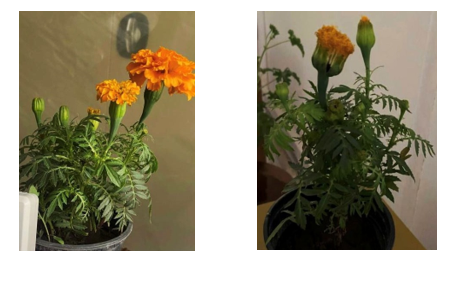Assessing the Impact of Air Pollution on Plant Growth and Development: A Study in Iraq
Participants: Fatimah Taha Mohammed, Adil Ahmed Khalaf, Humam Abdul Lateef, Yuser Muntasser Qassim, Ammar Abdulrazzaq Sakran, Ali Alakbar Hameed Abed, Ahmed Nawfal Madhi, Faidh Talib Kadhim, Harith Aouf Abdulrahman, Ayman khalid Abdulkareem.
Organizing team: Haneen A. Salih, Safa Muneer Delan, Athraa Faraj
Introduction
Air quality in Iraq has steadily worsened due to 1) the rise in the number of crude oil-powered electric power plants, 2) the excessive use of home and commercial generators, 3) the expansion of public and private transportation options, 4) the use of fossil fuels for heating, 5) and the unrestrained burning of solid waste. As a result, enormous amounts of pollutants have been released into the atmosphere, raising serious concerns about Iraq's air quality [1]. The aim of this study is to examine the impact of air pollution on the distinct morphological characteristics of various plant species within three different locations while maintaining consistent environmental conditions throughout the experimentation process. We started the experiment on international tree day.
Figure (1): Picture of the three plant species used in this study.
2. Experimental Setup
We chose three local plant species frequently seen in home gardens and parks: Pelargonium Graveolens, Bougainvillea, and Tagetes Erecta (Figure 1). We set up three replicates of each plant species in three distinct locations: a school lab (low pollution area), a greenhouse (control group), and an area near a gas power generator of electricity (high pollution area). In order to ensure the accuracy and reliability of our findings, we incorporated three iterations of every botanical variety, culminating in a sum of twenty-seven repetitions. The experiment involved subjecting each replicate to varying air quality and pollution levels at the three chosen locations and recording the quality of the plants’ development over time. We measured the HCHO, TVOC, PM2.5, and CO2 levels, daily, for six consecutive days, as an indication of the pollution levels that the plants experienced.
3. Results and Discussion
Figure (2): Comparative Images of Tagetes erecta Pre-Exposure (Left) and Post-Exposure (Right) to Airborne Pollutants Across a 6-Days Duration
Figure (3): Comparative Images of Pelargonium Graveolens Pre-Exposure (Left) and Post-Exposure (Right) to Airborne Pollutants Across a 6-Day Duration
The Pelargonium Graveolens plant showed the least overall impact (Figure 3). However, we observed a notable shift in the lower branches of this plant, which died completely. The Bougainvillea plant, on the other hand, appeared to be trying to compensate for the negative effects of pollution by producing new leaf buds (results not shown). However, these buds did not grow, likely due to a lack of sufficient nutrients provided by the few remaining leaves on the plant. This is compatible with the findings from a study done on the Bougainvillea plant by Sharma et al [2].
The Tagetes Erecta plant was the most heavily impacted by the pollution, losing its flowers first and eventually being left with only pale, dying leaves (Figure 2). This shows the importance of further research into plant species-specific responses to pollution, as different species may have varying levels of tolerance to environmental stressors.
4. Conclusion
The findings of our study indicate a clear correlation between elevated air pollution levels and the alteration of plant morphology. This is substantiated by discernible effects observed across the three selected plant species during the experiment. Nonetheless, it's noteworthy that the extent of these detrimental effects varies, contingent upon the individual characteristics of each plant species under investigation.
Acknowledgments
We would like to express our sincere gratitude to Baghdad Gifted Students School who have supported the research training particularly, Dr. Hamid Noori Ghazal and Dr. Dunya Faeq Munaf - without their assistance, this research training would not have been possible.
References
[1] Chaichan, M. T., Kazem, H. A., & Abed, T. K. (2016). Traffic and outdoor air pollution levels near highways in Baghdad, Iraq. Environment, Development and Sustainability, 20(2), 589–603. https://doi.org/10.1007/s10668-016-9900-x
[2] Sharma, S., Srivastava, R., & Roy, R. R. (2005). Role of bougainvilleas in mitigation of environmental pollution. PubMed,47(2),131–134. https://pubmed.ncbi.nlm.nih.gov/16649617




